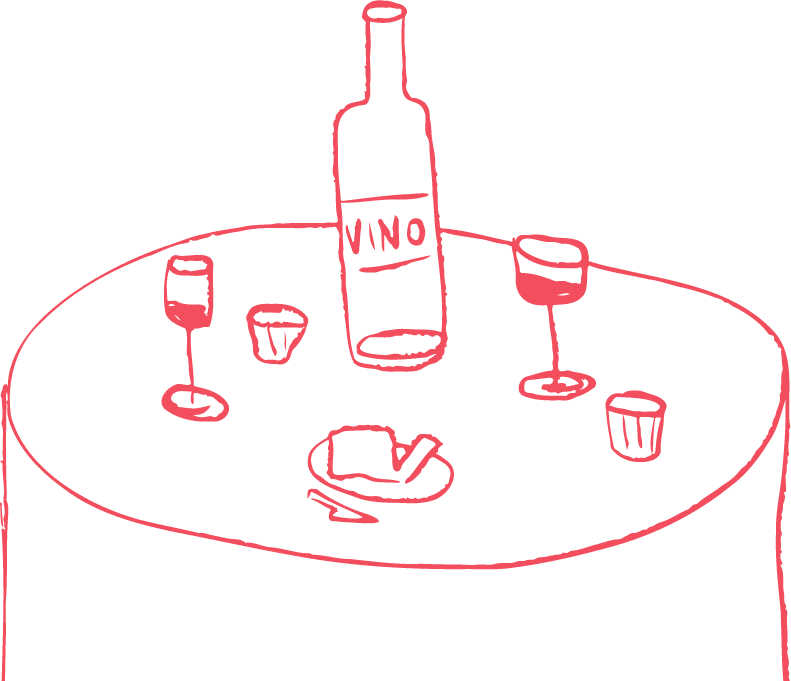![]()

![]()

Our latest Faber road trip took Anthony west to Pembrokeshire to meet Andy and the Mounsey family at Velfrey Vineyard. The visit was part of a two-part series exploring Wales’s growing drinks scene. In Part One, Anthony discovers how Velfrey creates award winning wines on the Welsh coast.
Velfrey Vineyard is proudly run by Andy and Fiona Mounsey along with their son Ryan and his wife Sophie. Established in 2016, it sits on gentle south facing slopes in Lampeter Vale near Narberth. The three-acre site is home to around five thousand vines and enjoys clay loam soils, Pembrokeshire sunshine and cool coastal breezes that together create an ideal microclimate for viticulture.
Watch Part One of our Pembrokeshire Road Trip on YouTube where Anthony visits Velfrey Wines to learn about Welsh viticulture and taste their award-winning wines.
As Andy explained during the visit, the idea began almost by accident. The family moved to Pembrokeshire in 2014 with no plans for a vineyard until they tasted some local Welsh wines and realised that their field, originally bought with sheep in mind, had everything needed to grow grapes. The slope was perfectly aligned to catch the sun, sheltered from strong winds and just the right height above sea level.
Today the vineyard produces sparkling, white and rosé wines that have earned praise in national and international competitions. Their Pinot Noir adds depth to the sparkling rosé, while Seyval Blanc forms the base for much of their sparkling production. Solaris is used for a still wine with a fragrant, fruity character that reflects the light and freshness of coastal Wales.
Andy talked passionately about how Welsh wine is now making its mark. He explained that the region shares the same growing degree days that Champagne experienced more than a century ago when it was gaining its reputation for world class sparkling wines. That balance of cool climate, long ripening and moderate sugar levels allows Velfrey to produce wines with finesse and freshness rather than high alcohol.
Andy summed it up simply:
“Welsh wine is incredible. It really is. We say Welsh wine is deliciously diverse because there’s so much diversity.”
That sense of variety is reflected across the range at Velfrey, with cool climate sparkling wines that show real finesse and a still Solaris that captures the freshness of the coastal landscape.
The vineyard’s ethos is built on sustainability and respect for nature. Instead of relying on chemicals, the family uses natural plant infusions such as willow, stinging nettle, dandelion flower heads and comfrey to feed the vines and help with disease control. Hundreds of metres of drainage have been installed to keep the roots healthy, since vines dislike sitting in waterlogged soil.
This careful approach results in wines that are as honest as they are elegant. For Anthony it was a reminder of why these trips matter discovering producers who share Faber’s belief in real sustainability honest ingredients and the stories behind them.
As Anthony noted during the visit, “You can’t just put a wine on a list because it’s local. It has to have purpose. And these wines do. They tell a story that deserves to be shared.”

The tasting began with Velfrey’s still Solaris, a natural ferment made without added yeast or sugar. Its clean orchard fruit flavours and delicate aromas impressed Anthony, who commented on its freshness and balance.
Next came their signature sparkling wine, a traditional method Seyval Blanc aged on its lees for eighteen months. The result was a dry, crisp and citrus led wine with hints of elderflower and a gentle toasty note from the ageing.
The sparkling has earned multiple awards including Best White Sparkling Wine in Wales and continues to gain recognition beyond the region. Andy noted how rewarding it feels to see Welsh bottles competing with and even surpassing traditional Champagne in blind tastings.
For Anthony, it was a moment that confirmed Welsh wine’s place on Faber’s radar.
“In a restaurant you want variety and authenticity,” he said. “These wines bring both. They are beautifully made and truly British, adding something distinctive to any list.”

Visitors are welcome at Velfrey Vineyard to experience the landscape and the wines firsthand. Guided tours run on Thursdays and Saturdays at 11am between Easter and mid-October. Each 90 minute visit includes a relaxed walk through the vines, a talk about the vineyard’s history and a tasting of current releases. The cost is around £15 per person.
For a shorter experience (around 40 minutes), walk in tastings are available throughout the year at £5 per person. Guests can also choose to enjoy Welsh grazing or cheese boards featuring local charcuterie, artisan cheeses, focaccia, chutneys, Welsh crackers and Mediterranean style accompaniments as well as vegan options. Prices range between £17 and £37 depending on the package.
The vineyard shop is open Tuesday to Saturday for wine purchases, bookings, Adopt a Vine packages and gift vouchers.
More information can be found on their website.
The visit also highlighted the wider story of Welsh wine. The country now has around 48 vineyards producing up to 180,000 bottles each year, a number that continues to grow. The Welsh Government’s Drinks Cluster is supporting the industry with a strategy to increase its value tenfold to £100 million pounds by 2035, focusing on sustainable and fair working practices.
Climate change has also played a role. Warmer summers and improved vineyard practices have made once marginal areas ideal for growing grapes. Across England and Wales, vineyard area has expanded by more than five times since 2005, and still wines are now rising in popularity alongside sparkling.
Velfrey stands as a perfect example of this progress. Small scale, hands on and driven by passion, it represents the quality and potential of Welsh wine at its best.
Faber visits Still Wild Distillery, Pembrokeshire to meet founder James & explore the craft of cold distilled, foraged Welsh spirits inspired by the wild landscape.
Read moreFaber visits Velfrey Vineyard in Pembrokeshire to explore Welsh winemaking, sustainability and the story behind one of Wales’s most exciting vineyards.
Read more
